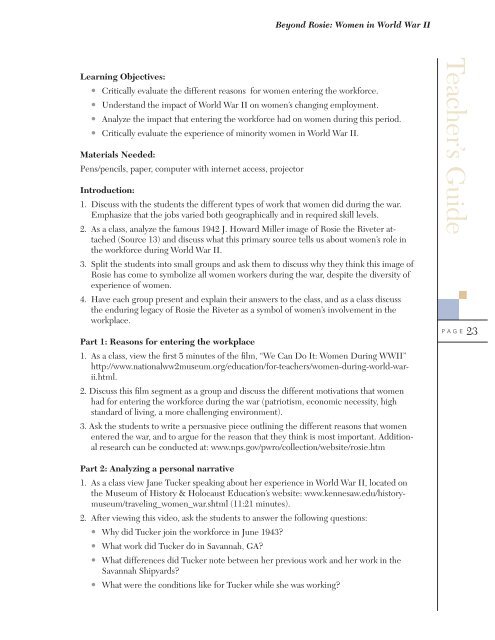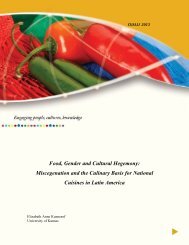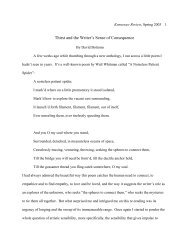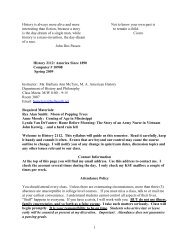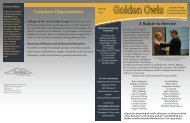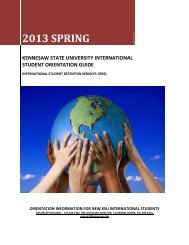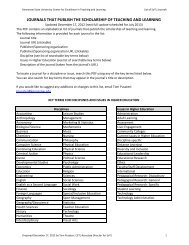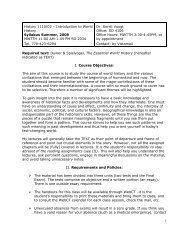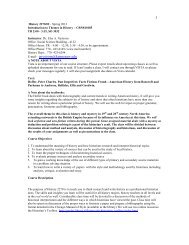Beyond Rosie: Women in World War II - Kennesaw State University
Beyond Rosie: Women in World War II - Kennesaw State University
Beyond Rosie: Women in World War II - Kennesaw State University
Create successful ePaper yourself
Turn your PDF publications into a flip-book with our unique Google optimized e-Paper software.
<strong>Beyond</strong> <strong>Rosie</strong>: <strong>Women</strong> <strong>in</strong> <strong>World</strong> <strong>War</strong> <strong>II</strong><br />
Learn<strong>in</strong>g Objectives:<br />
• Critically evaluate the different reasons for women enter<strong>in</strong>g the workforce.<br />
• Understand the impact of <strong>World</strong> <strong>War</strong> <strong>II</strong> on women’s chang<strong>in</strong>g employment.<br />
• Analyze the impact that enter<strong>in</strong>g the workforce had on women dur<strong>in</strong>g this period.<br />
• Critically evaluate the experience of m<strong>in</strong>ority women <strong>in</strong> <strong>World</strong> <strong>War</strong> <strong>II</strong>.<br />
Materials Needed:<br />
Pens/pencils, paper, computer with <strong>in</strong>ternet access, projector<br />
Introduction:<br />
1. Discuss with the students the different types of work that women did dur<strong>in</strong>g the war.<br />
Emphasize that the jobs varied both geographically and <strong>in</strong> required skill levels.<br />
2. As a class, analyze the famous 1942 J. Howard Miller image of <strong>Rosie</strong> the Riveter attached<br />
(Source 13) and discuss what this primary source tells us about women’s role <strong>in</strong><br />
the workforce dur<strong>in</strong>g <strong>World</strong> <strong>War</strong> <strong>II</strong>.<br />
3. Split the students <strong>in</strong>to small groups and ask them to discuss why they th<strong>in</strong>k this image of<br />
<strong>Rosie</strong> has come to symbolize all women workers dur<strong>in</strong>g the war, despite the diversity of<br />
experience of women.<br />
4. Have each group present and expla<strong>in</strong> their answers to the class, and as a class discuss<br />
the endur<strong>in</strong>g legacy of <strong>Rosie</strong> the Riveter as a symbol of women’s <strong>in</strong>volvement <strong>in</strong> the<br />
workplace.<br />
Part 1: Reasons for enter<strong>in</strong>g the workplace<br />
1. As a class, view the first 5 m<strong>in</strong>utes of the film, “We Can Do It: <strong>Women</strong> Dur<strong>in</strong>g WW<strong>II</strong>”<br />
http://www.nationalww2museum.org/education/for-teachers/women-dur<strong>in</strong>g-world-warii.html.<br />
2. Discuss this film segment as a group and discuss the different motivations that women<br />
had for enter<strong>in</strong>g the workforce dur<strong>in</strong>g the war (patriotism, economic necessity, high<br />
standard of liv<strong>in</strong>g, a more challeng<strong>in</strong>g environment).<br />
3. Ask the students to write a persuasive piece outl<strong>in</strong><strong>in</strong>g the different reasons that women<br />
entered the war, and to argue for the reason that they th<strong>in</strong>k is most important. Additional<br />
research can be conducted at: www.nps.gov/pwro/collection/website/rosie.htm<br />
Teacher’s Guide<br />
PAGE 23<br />
Part 2: Analyz<strong>in</strong>g a personal narrative<br />
1. As a class view Jane Tucker speak<strong>in</strong>g about her experience <strong>in</strong> <strong>World</strong> <strong>War</strong> <strong>II</strong>, located on<br />
the Museum of History & Holocaust Education’s website: www.kennesaw.edu/historymuseum/travel<strong>in</strong>g_women_war.shtml<br />
(11:21 m<strong>in</strong>utes).<br />
2. After view<strong>in</strong>g this video, ask the students to answer the follow<strong>in</strong>g questions:<br />
• Why did Tucker jo<strong>in</strong> the workforce <strong>in</strong> June 1943?<br />
• What work did Tucker do <strong>in</strong> Savannah, GA?<br />
• What differences did Tucker note between her previous work and her work <strong>in</strong> the<br />
Savannah Shipyards?<br />
• What were the conditions like for Tucker while she was work<strong>in</strong>g?


